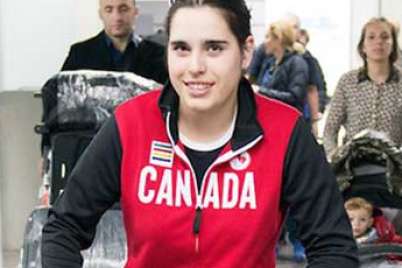
Coach celebrates debut of Para-snowboard in Sochi
At 1:30 a.m., Eastern daylight time on Friday, March 14, 2014, the new Paralympic sport of snowboarding made its debut in Sochi.
Known as Para-snowboard, disabled athletes who are able to stand compete in the event, completing three timed runs. The Sochi course is slightly altered from the one used for the Olympic Winter Games snowboard cross.
Four Canadians competed:
Para-snowboard is a completely new sport to the Olympics and Paralympics, and it creates new opportunities for young and older snow-loving kids who are differently-abled.
For some, snowboarding can be an easier alternative to skiing, because it can require less coordination than skiing or sledge. In snowboarding, both legs are anchored to the board and the arms are free. As long as athletes are able to use some core muscles (stomach and a bit of lower back), they can snowboard.
I had the pleasure of coaching Ian Lockey and Tyler Mosher a few years ago.
The two men have the same infirmity: due to accidents, they have the use of about 50 percent of their lower-body muscles. Both were told that they would never snowboard again, but despite the arduous recovery, they can now walk and snowboard quite well.
Coaching disabled athletes is very similar to coaching able-bodied athletes because coaching is coaching. A coach works with an athlete’s strengths and weaknesses and helps them to set goals based on their current ability and the amount of time available to practice and train. The key operative phrase is “current ability”.
Ian and Tyler were avid recreational snowboarders before their injuries, so both knew the fundamentals of snowboarding:
- Leaning over your toe edge (if you have toes!) to do a toe side turn
- Leaning back over your heel edge to turn heel side
The rest is all about projecting your upper-body down the fall line, and down the hill. Their reduced mobility in their lower limbs meant we focused on the muscles they could use, not on those they couldn’t.
Michelle Salt lost a leg in an accident a few years ago. She eventually found a prosthetic leg suitable for snowboarding and when she wears her snowpants, no one can tell because she rides with the best of them.
It meant a late night for me on Thursday, but I was watching all four of them race in this historical first para-snowboard event.
Photo of Tyler Mosher © Canadian Paralympic Committee’s “It’s not what’s missing, it’s what’s there” campaign





